Whitechapel Bell Foundry update: Tower Hamlets Council have approved the plans. Read the news on the BBC.
The Tower Hamlets Development Committee will consider the latest planning application for Whitechapel Bell Foundry next Thursday, 14th Nov 2019.
The proposals include: “Demolition of unlisted 1980s building and wall to the rear. Erection of building along Plumbers Row and Fieldgate Street with hotel …” 31/44 Architects kindly sent me the illustration below of what it will look like.
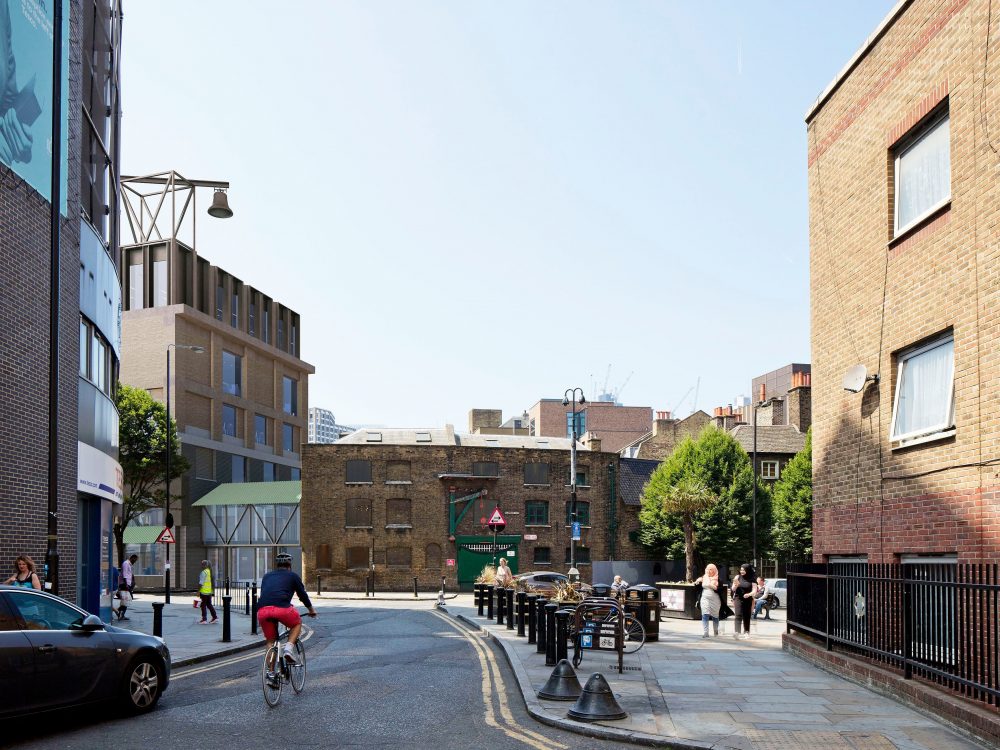
As you can see the old bell foundry buildings remain, and the new hotel is adjacent to them on the left.
Part retention of the foundry
The planned proposals also include: “Part retention of B2 land use (foundry) and internal alterations and refurbishment of listed building to provide new workshops/workspaces (B1 land use) and cafe (A3 land use) at ground floor.” Below is a section of the original redesign plans from the TH council website, dated 3rd Jan 2019. The orange/pink area in the centre clearly shows a working foundry. It won’t be able to cast the “tower bells”, the owners of the foundry moved that production elsewhere, for good reason. But it will be a working foundry casting smaller bells.
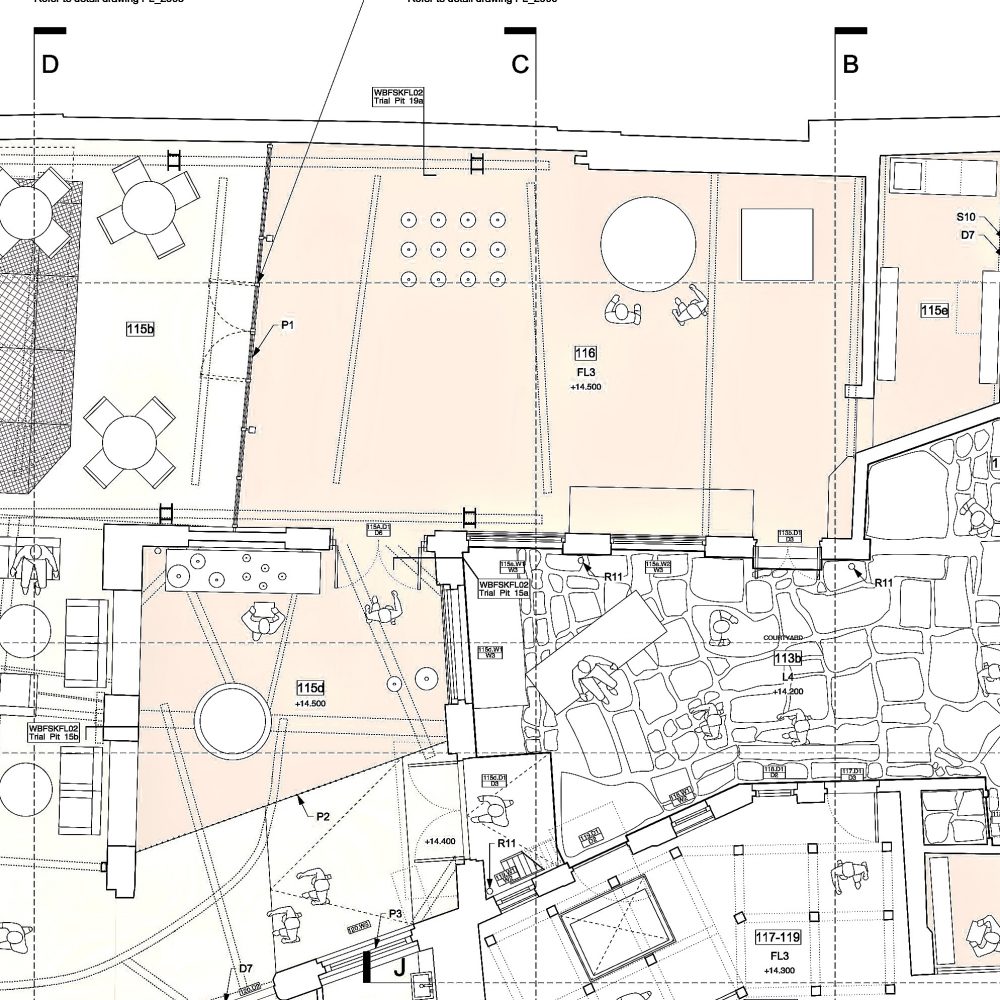
The white area on the left will be the cafe, which will will be separated from the foundry by a glass wall. This will enable the public to see bells being cast, granting access we never had before. You can see the cafe in the background of the top illustration here from 31/44 Architects.
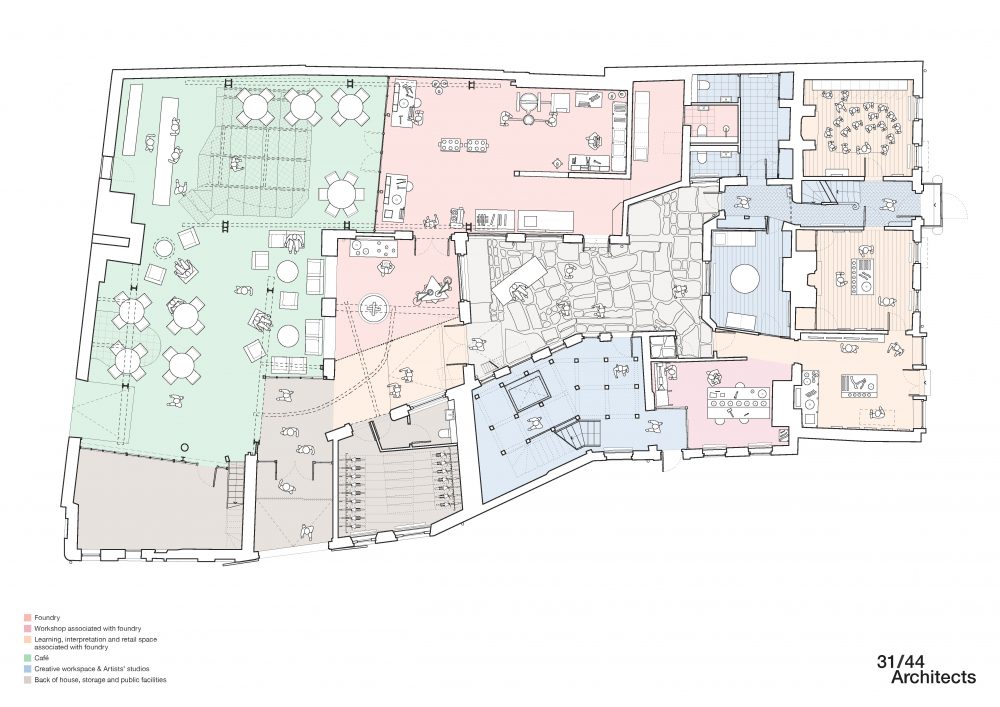
Image courtesy 31/44 Architects
Above is a plan for the ground floor of the listed foundry buildings from a document dated June 2019, sent to me by 31/44 Architects. The pink area in the centre is the foundry, the cafe is in green on the left, and the hotel will be further to the left. The right hand wall is the old shop front on Whitechapel Road. Behind it a foundry showcase and shop will sell the bells and other crafts made on site. Artists’ studios will occupy other areas of the historic Grade II listed foundry site.
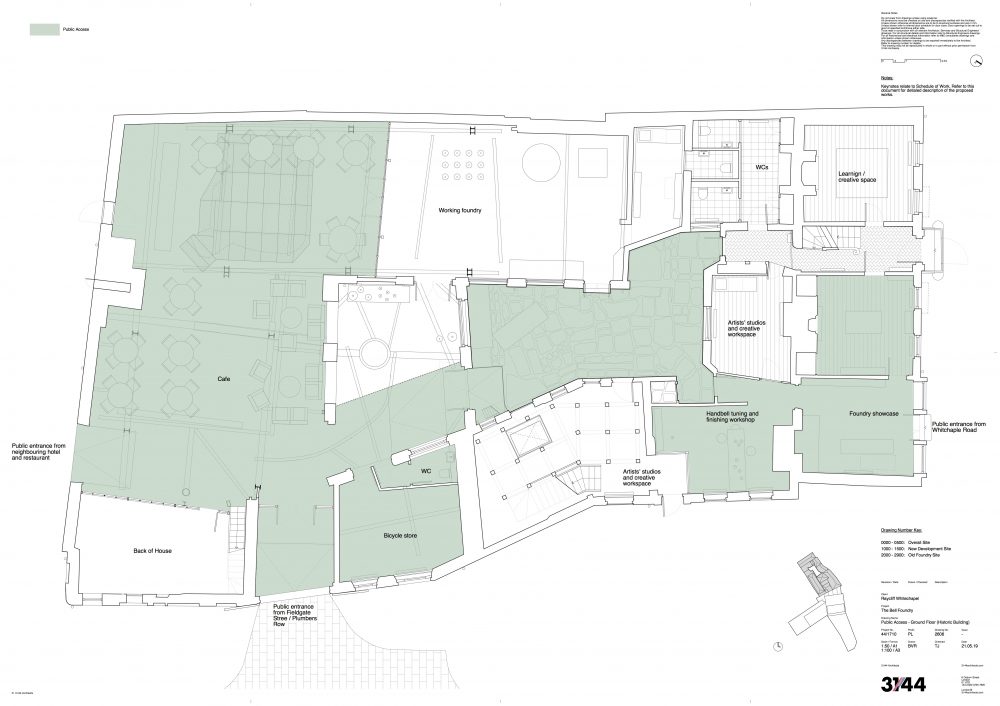
The earlier buildings
The foundry began in 1570, and moved to the present site around 1746-7, when the Hughes family took it over. The owner lived above the shop on Whitechapel Road, and the foundry was slightly west of Plumber’s Row. The site has been rebuilt multiple times since then. Originally the foundry settled here because it was outside the City walls. Today it’s practically inside central London, and unsuitable for big industrial production. The old buildings are going to require considerable investment. One of the problems that Whitechapel Bell Foundry Ltd faced was, of course, the decline in demand for bells.
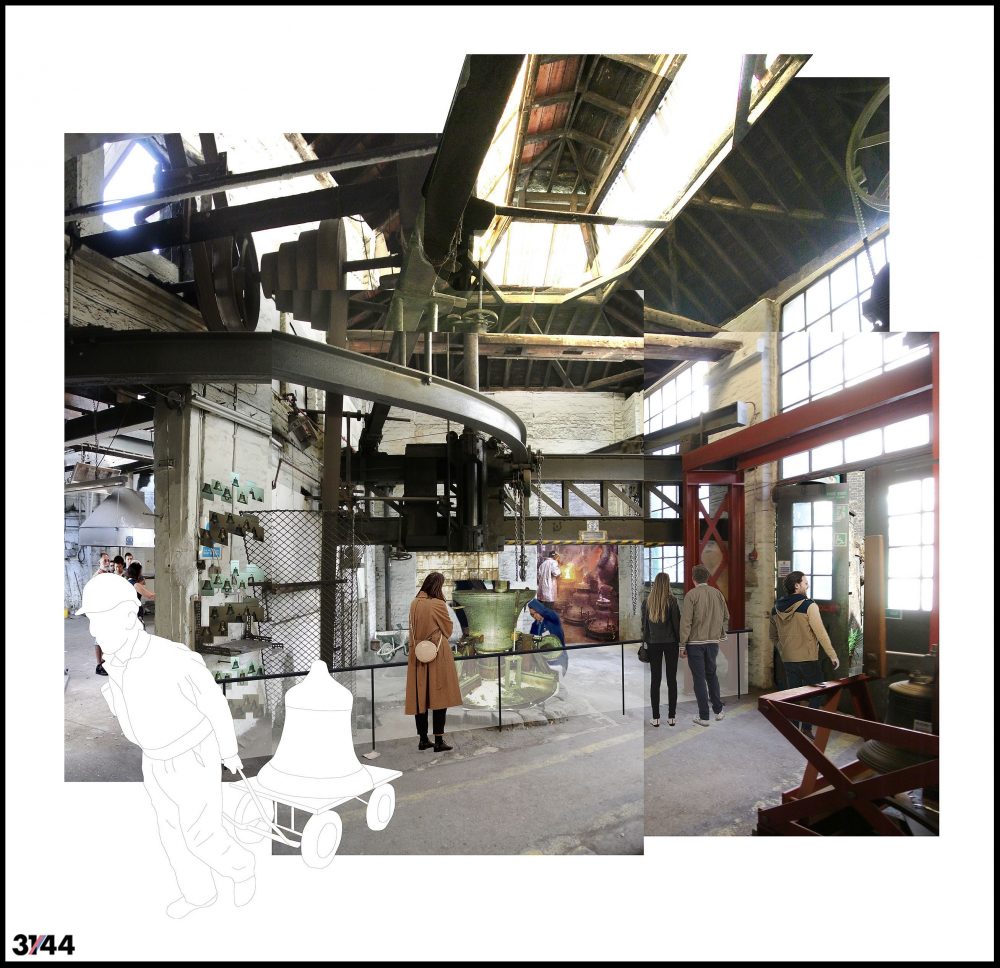
Casting bells to begin again at Whitechapel
If the plans are approved by the council on Thursday, production will resume. It will be a partnership between The Westley Group and AB Fine Art Foundry who have been working together for 30 years. AB Fine Art, one of Europe’s leading fine art foundries, are based in the old ‘Spratt’s’ dog biscuit factory, in Poplar. A modern electric induction furnace will be installed. No combustion means no associated emissions.
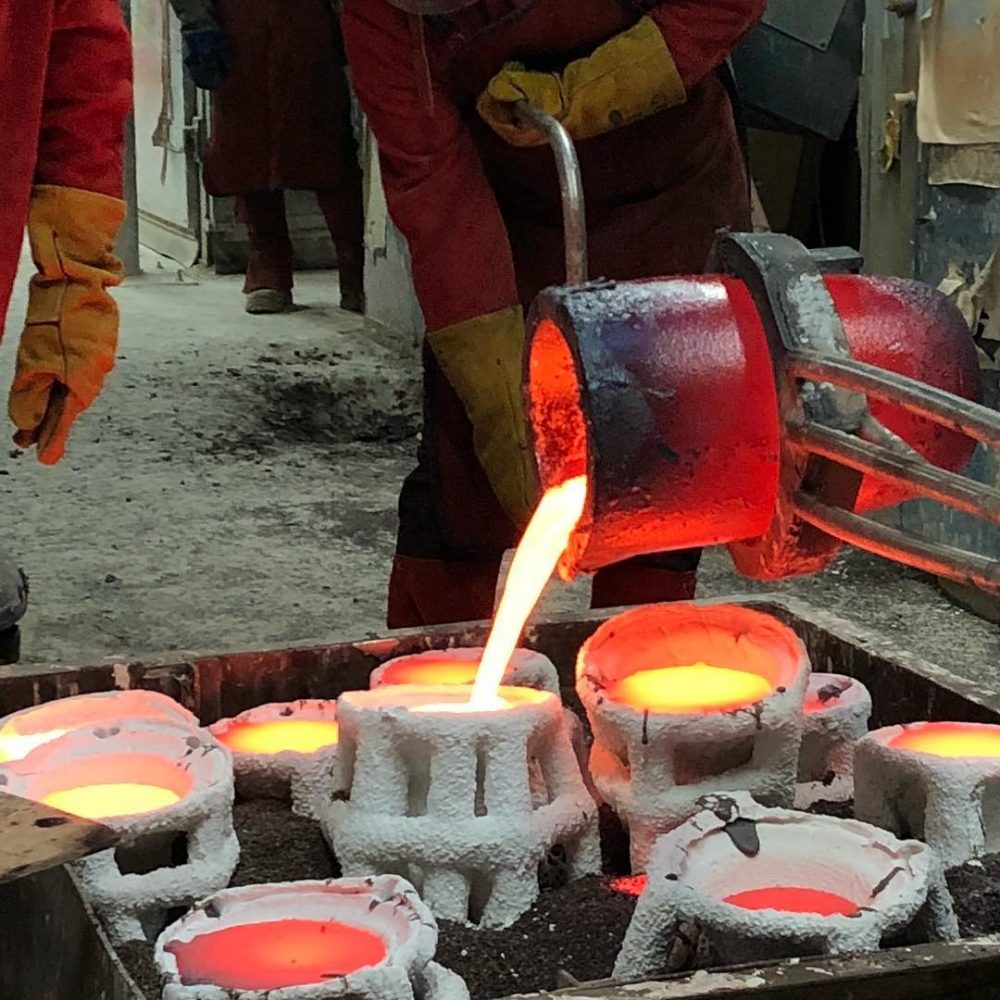
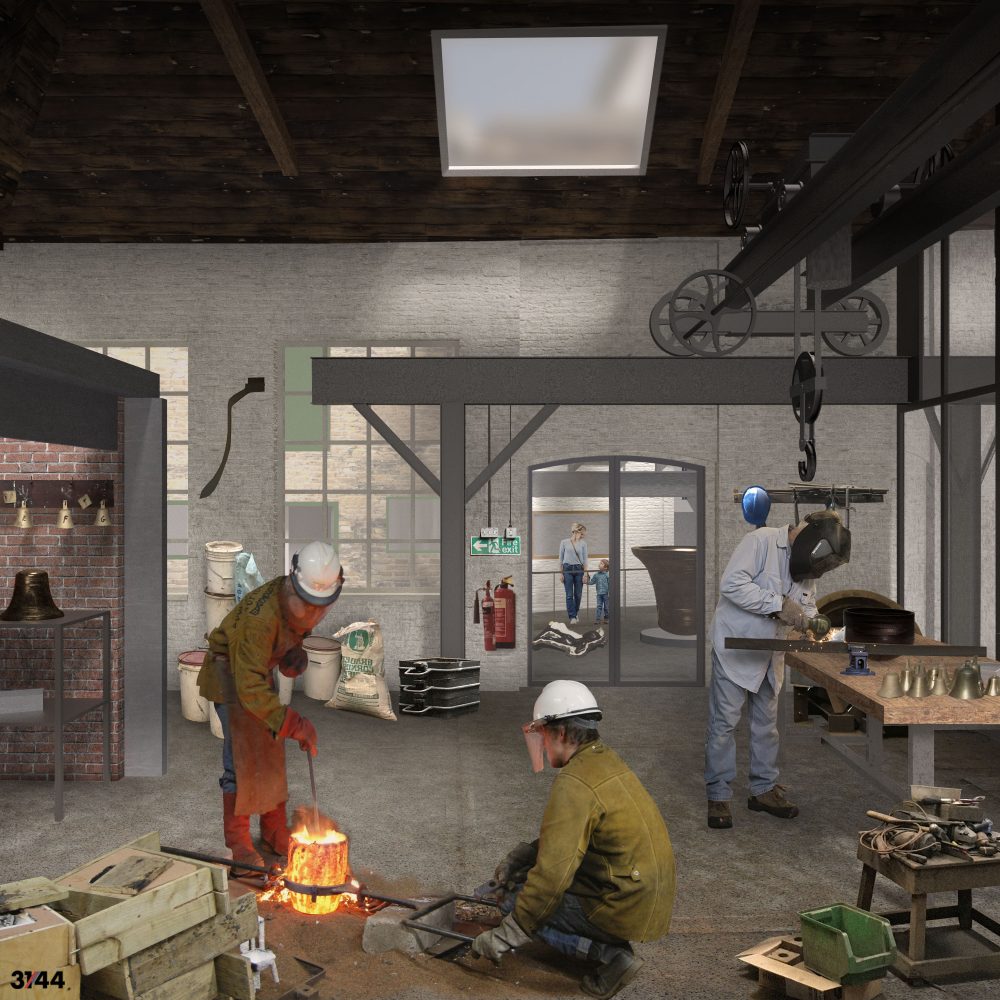
Further points
Alan Hughes, a current director of Whitechapel Bell Foundry Ltd was recently quoted in East London Lines saying that campaigners objecting to the redevelopment of the site have “misled the public”.
The UK Heritage Building Preservation Trust say here that, “The plans incorrectly presume that the site is no longer viable as a working foundry…” I think the current directors of Whitechapel Bell Foundry Ltd, Alan and Kathryn Hughes, would dispute thatI There are problems getting big lorries to the site today. They were using diesel to heat the foundry – I don’t think that would be allowed here anymore. Using electricity on an industrial scale would require an extra new substation. Then there is the small problem that neither the UKHBT or the Factum Foundation, which has produced rival plans, don’t actually own the land. Both organisations also claim: “In order for Raycliff to proceed, Tower Hamlets Council must grant change of use from foundry to hotel…” Since the hotel is not on the site of the foundry they don’t.
Alan and Kathryn Hughes have considerable experience of casting bells on this site. They have carefully chosen partners they’ve already been working with to carry on their business. Westley Group operate from four sites across the UK casting for a variety of purposes and employing 300 people. AB Fine Art started out as A&A Castings in 1977. They have has built a considerable customer base of famous artists.
See also my article a couple of weeks ago on OurBow: WHITECHAPEL BELL FOUNDRY PLANNING UPDATE . Please do follow the links in these articles to gain a more rounded view.
Alan Tucker


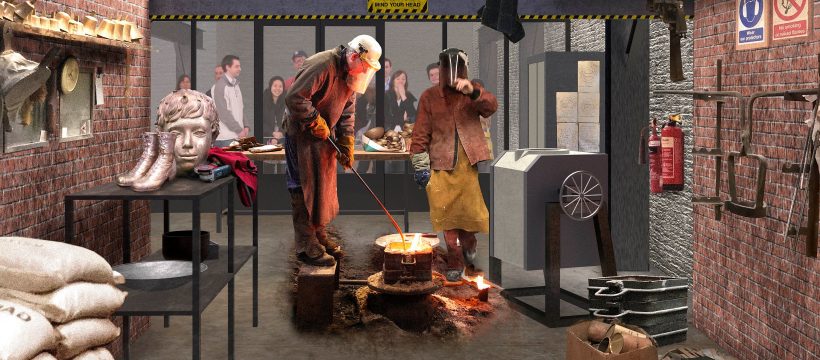
Thanks for you comment Kenneth. The Victorians built lots of churches and town halls, and must of bought lots of bells. But times change. These plans are a live offer from people who know what they’re doing.
Looks good. Is it the best for the foundry?